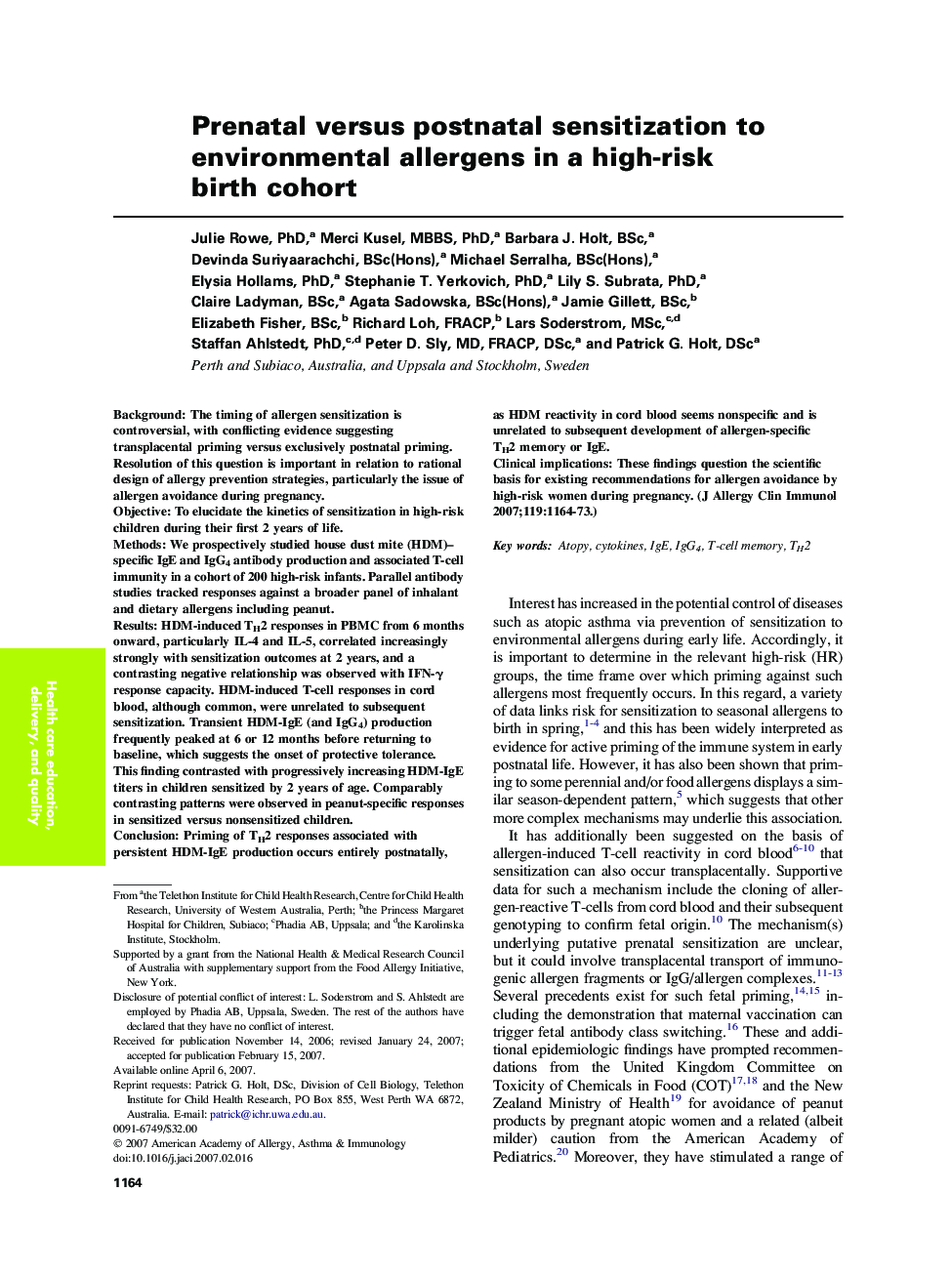| Article ID | Journal | Published Year | Pages | File Type |
|---|---|---|---|---|
| 3201795 | Journal of Allergy and Clinical Immunology | 2007 | 10 Pages |
BackgroundThe timing of allergen sensitization is controversial, with conflicting evidence suggesting transplacental priming versus exclusively postnatal priming. Resolution of this question is important in relation to rational design of allergy prevention strategies, particularly the issue of allergen avoidance during pregnancy.ObjectiveTo elucidate the kinetics of sensitization in high-risk children during their first 2 years of life.MethodsWe prospectively studied house dust mite (HDM)–specific IgE and IgG4 antibody production and associated T-cell immunity in a cohort of 200 high-risk infants. Parallel antibody studies tracked responses against a broader panel of inhalant and dietary allergens including peanut.ResultsHDM-induced TH2 responses in PBMC from 6 months onward, particularly IL-4 and IL-5, correlated increasingly strongly with sensitization outcomes at 2 years, and a contrasting negative relationship was observed with IFN-γ response capacity. HDM-induced T-cell responses in cord blood, although common, were unrelated to subsequent sensitization. Transient HDM-IgE (and IgG4) production frequently peaked at 6 or 12 months before returning to baseline, which suggests the onset of protective tolerance. This finding contrasted with progressively increasing HDM-IgE titers in children sensitized by 2 years of age. Comparably contrasting patterns were observed in peanut-specific responses in sensitized versus nonsensitized children.ConclusionPriming of TH2 responses associated with persistent HDM-IgE production occurs entirely postnatally, as HDM reactivity in cord blood seems nonspecific and is unrelated to subsequent development of allergen-specific TH2 memory or IgE.Clinical implicationsThese findings question the scientific basis for existing recommendations for allergen avoidance by high-risk women during pregnancy.
